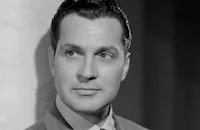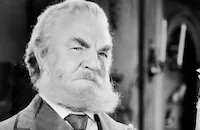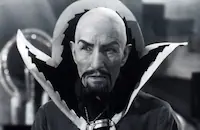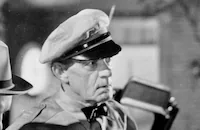The County Chairman
Cast & Crew
John Blystone
Will Rogers
Evelyn Venable
Kent Taylor
Louise Dresser
Mickey Rooney
Film Details
Technical Specs

Synopsis
In a small town in Tomahawk County, Wyoming, in the early part of this century, schoolteacher Lucy Rigby, the daughter of the town's most powerful citizen, Judge Elias Rigby, is involved in a secret romance with Ben Harvey, the young law partner of her father's political rival, Jim Hackler. When the convention to nominate a candidate for public prosecutor to run against Rigby is deadlocked, Jim secures Ben's nomination by offering his popular dog Oscar to Tom Cruden if Cruden will back Ben. When Ben learns about his nomination, he is reluctant to run, but he agrees so that Jim, who has been like a father to him, will not be humiliated, and promises Lucy that he will not attack her father. Jim takes Ben campaigning and instructs him with his accumulated political acumen. Upon their return, Lucy becomes upset when she sees Ben with Lorna Cruden, with whom Jim has urged Ben to flirt. When Rigby publicly accuses Ben of cowardice, Ben stands by idly, out of deference to Lucy, but when Rigby insults Jim, Ben calls Rigby the biggest crook in the county and denigrates "a Rigby promise." Outraged, Lucy agrees to marry Henry Cleaver, the son of a newspaper publisher, if he helps her father beat Ben. Jim, who twenty years earlier lost Lucy's mother Mary to Rigby because of Rigby's lies, tries to reason with Lucy, but she pridefully stands by her "Rigby promise" to Henry. Learning that Jim plans to publish a story that will prove Rigby received $8,000 in an out-of-court settlement for his client's railroad accident and that he gave the client only $2,000, Mary, who wants Lucy to wed Ben, pleads with Jim not to have the story printed. Jim tears the story up. On election day, Rigby seems to be the winner with returns in from all but two districts. Because of trouble with the wire, Sassafras, a black buggy driver, is sent to get the vote count from the agent at the depot. The figures he returns with confirm Rigby's victory. Ben concedes defeat, and when Jim, in publicly congratulating Rigby, states that Rigby now will turn over the entire $8,000 to his client, Rigby reluctantly agrees. Disheartened, but unwilling to break her promise, Lucy drives off with Henry in his smoky horseless carriage to the county seat to get married. When the railroad agent sees that Sassafras' figures are incorrect, Ben is declared the victor. A cavalcade of carriages, with Jim and Ben leading, rush to the county seat. In the midst of the marriage ceremony, Henry notices that his car is on fire, and while he tends to it, Ben tells Lucy about the mistake and they marry.

Director
John Blystone
Cast

Will Rogers

Evelyn Venable

Kent Taylor
Louise Dresser

Mickey Rooney

Berton Churchill
Frank Melton

Robert Mcwade
Russell Simpson

William V. Mong
Jan Duggan
Gay Seabrook

Charles Middleton
Erville Alderson

Stepin Fetchit
Alfred James
Francis Ford
Harlan Knight
Carl Stockdale
Sam Flint
Frank Austin
Paul Kruger
Anders Van Haden
William Burress

Lew Kelly
Eleanor Wesselhoeft
Ernie Shields
Harry Dunkinson
Walter Downing
Carmencita Johnson
Frank Hammond
Lorraine Rivero
Crew

Film Details
Technical Specs

Quotes
Trivia
Notes
An unidentified news item from March 1934, in the M-G-M Story Department Property Files at the AFI Louis B. Mayer Library, states that the film was to be directed by James Cruze. John Blystone earlier directed Rogers in the 1930 Fox film So This Is London. Motion Picture Herald points out that "many of the cast have appeared in previous Rogers pictures. Seven of them were with him in David Harum-Evelyn Venable, Kent Taylor, Louise Dresser, Stepin Fetchit, Frank Melton, Robert McWade and Charles Middleton." According to a Hollywood Reporter news item, this was Hal Mohr's last picture with Fox as a contract cameraman. Mohr, according to modern sources, married Evelyn Venable immediate after the film. Rogers, in a syndicated column on November 4, 1934, stated that some of the film was shot in Sonoma, CA. According to an interview with Mohr in a modern source, Rogers bowed to popular demand and gave a two-and-one-half hour solo show at a high school auditorium in Sonoma. Modern sources state that other scenes were shot in the Mojave Desert and that Dave O'Brien was in a crowd scene. Famous Players Film Co. produced a film based on the same play, which was distributed by Paramount in 1914 and starred Maclyn Arbuckle (see AFI Catalog of Feature Films, 1911-20; F1.0817). Paramount sold the world-wide motion picture rights to Fox in 1928.












